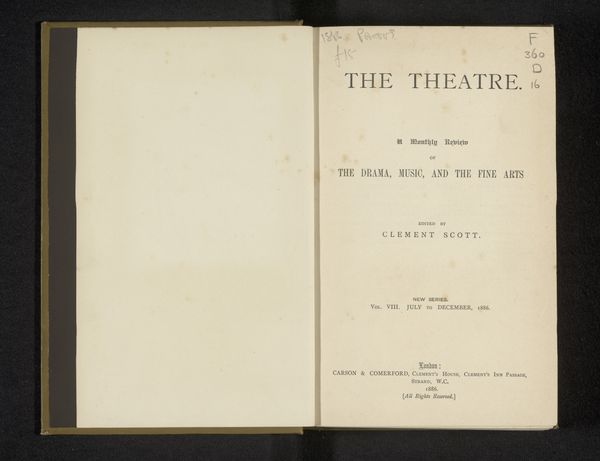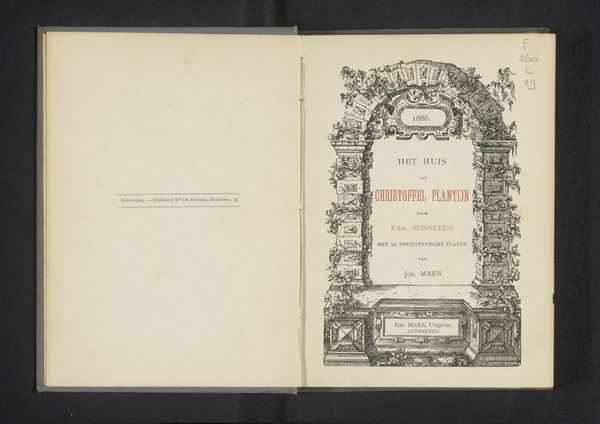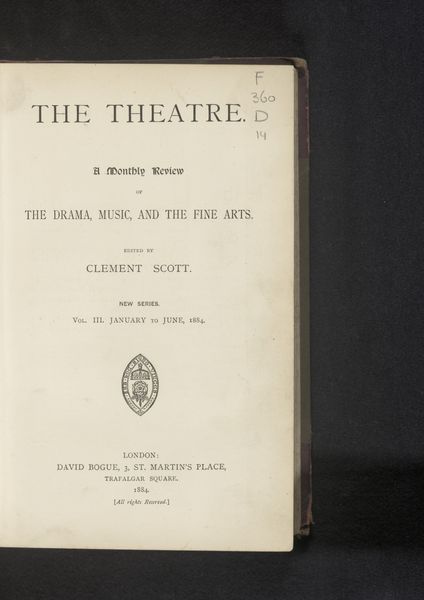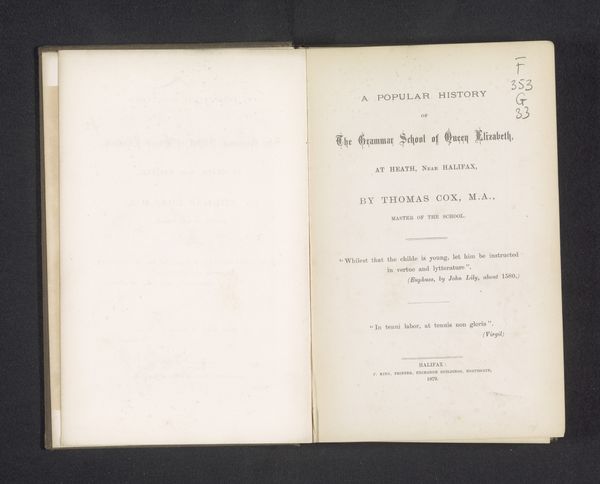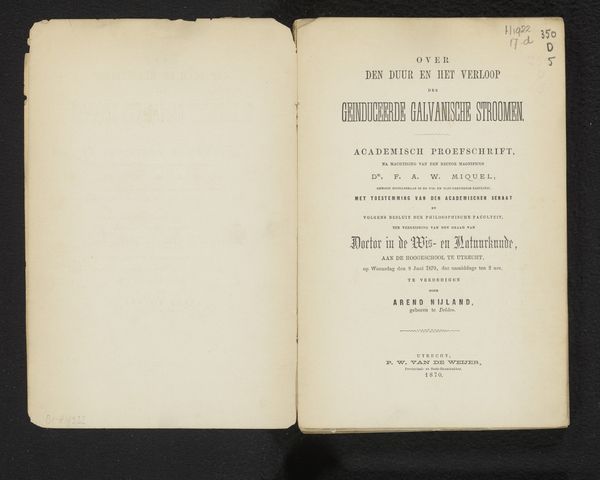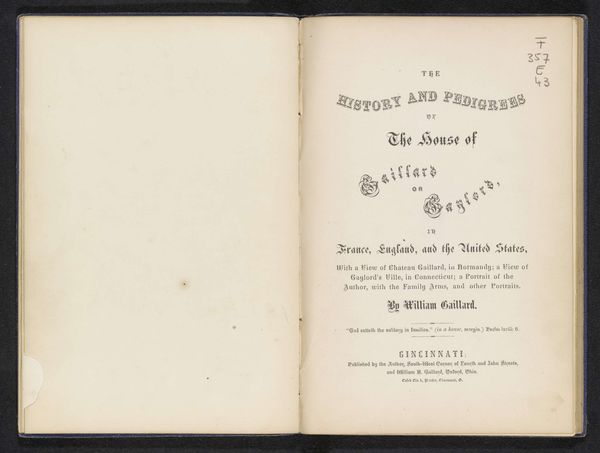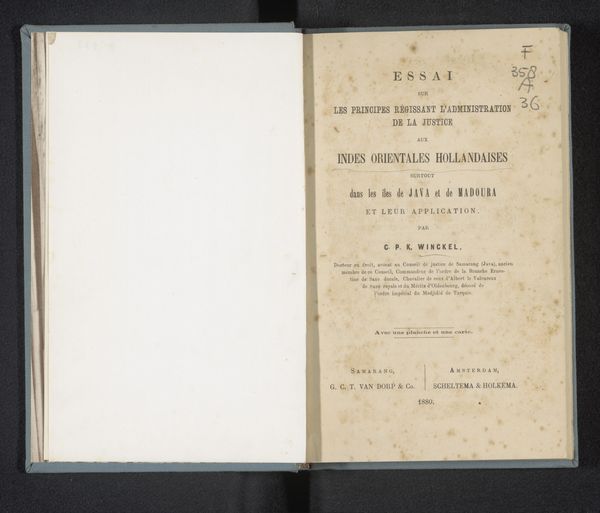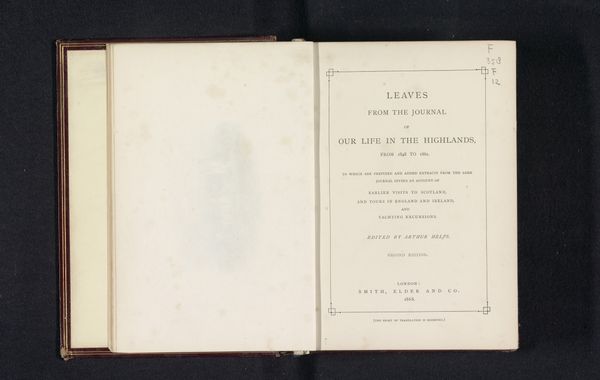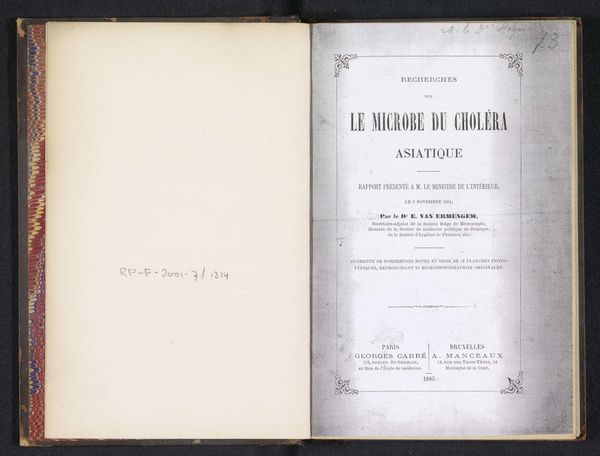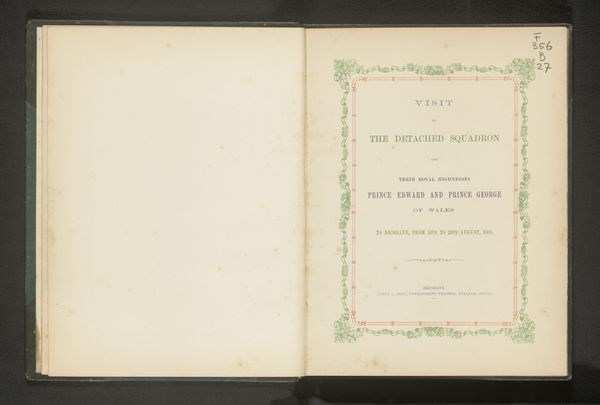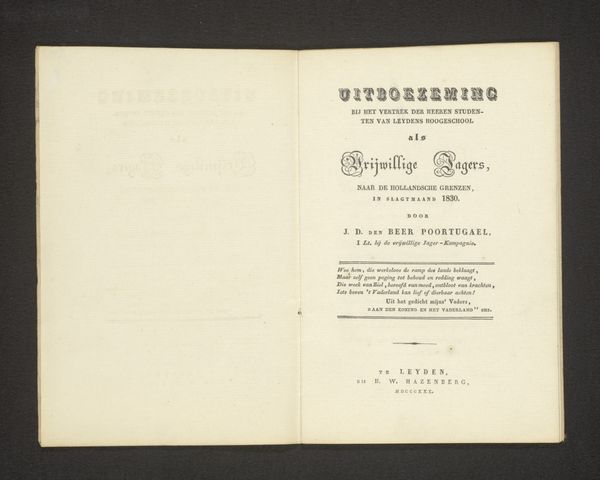
print, paper, typography
#
aged paper
#
homemade paper
#
paper non-digital material
#
paperlike
# print
#
paper texture
#
paper
#
personal sketchbook
#
typography
#
folded paper
#
paper medium
#
design on paper
#
historical font
Dimensions: height 244 mm, width 164 mm, thickness 31 mm
Copyright: Rijks Museum: Open Domain
Editor: Here we have *The Theatre*, a printed work from around 1879 by Wyman & Sons. It’s elegant, in a restrained, Victorian way. What can you tell me about it? Curator: The title page speaks volumes about the late 19th-century cultural landscape. The existence of a monthly magazine dedicated solely to theatre reveals the increasing importance and popularity of theatrical productions in society at that time. Notice "All Rights Reserved." How do copyright laws shaped the art world? Editor: Copyright! That's really interesting. I hadn’t thought about that aspect. But what kind of audience do you think it was trying to reach? Curator: This was aimed toward the expanding middle class. As industrialization shifted social structures, theatre became accessible to new audiences seeking entertainment and cultural refinement. Magazines such as this would have fostered both participation and critical discourse about theatrical events. Where does criticism take place today? Editor: That makes sense. It's like today's online theatre blogs, but in print form, shaping taste and cultural conversations! I like the lettering, how it uses design, and where "London" appears on the title page, and the name of the publishing house as part of the institution around theatre, and not just actors. It changes everything to include a wider sense of the production. Curator: Exactly. Wyman & Sons strategically situated themselves within the London cultural scene through publications like *The Theatre*. It's not just about printing; it's about participating in the cultural sphere and validating it as a business and influential media form. Editor: I hadn’t considered publishing as an act of validation. I’m starting to look at printed material, not just for the information it gives me but what it tells me about the cultural context and all the individuals it connects. Thanks for helping me see that. Curator: Absolutely, examining the infrastructure is how we reveal cultural production in totality, it all adds texture to the overall experience!
Comments
No comments
Be the first to comment and join the conversation on the ultimate creative platform.

